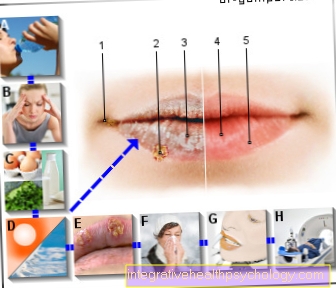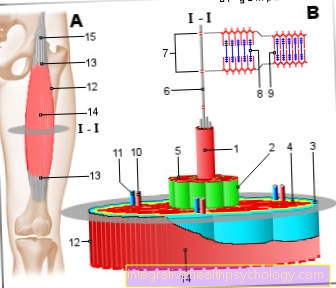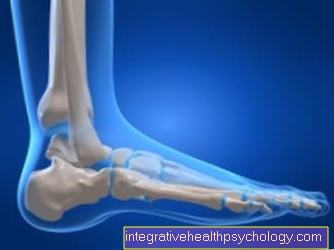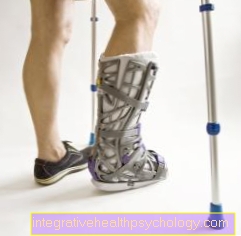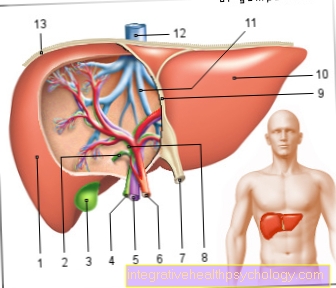Wilson disease
Synonyms
Wilson disease, hepatolenticular degeneration
introduction
Wilson's disease is a genetic disease in which there is an increased storage of copper in various organs due to a disruption in the copper metabolism (so-called storage disease). This leads to progressive damage to the affected organs, with the liver and brain being particularly affected. There are various forms of disease known to develop; the disease often ends if left untreated fatal. Therapy is through lifelong low-copper diet and the use of certain drugs is very successful. In some cases, a liver transplant is required.
definition
At the Wilson disease is an inherited defect of a Protein which regulates the redistribution of copper in the body and the excretion of copper in the bile in the liver cell. As a result, the body is overloaded with free copper, which has a damaging effect on cells and, above all, affects itself liver and certain brain regions. Can also be affected eye, Kidneys and heart. The copper deposits lead to damage and an increasing loss of function of the affected organs. Since the residual function of the defective protein can vary, the disease progresses differently.
Epidemiology
The frequency of the Wilson disease is given as 1: 30,000. The disease will autosomal recessive inherited and is a little more common in men. The onset of the disease is in adolescence and early adulthood, rarely after the age of 40.
Symptoms
The disease manifests itself in differently pronounced functional disorders of the affected organs:
Liver: Increased liver values, fatty liver up to liver cirrhosis (nodular remodeling of the liver with replacement of functional tissue by connective tissue). Liver dysfunction manifests itself in jaundice (yellowing of the skin and the whites of the eyes), coagulation disorders, anemia, ascites (Water retention in the abdomen).
Brain: The system of unconscious support and holding motor skills is particularly affected. This leads to a sedentary lifestyle, expressionlessness of facial expressions, stiffness of the muscles, but also excessive movements, muscle twitching and trembling, speech and swallowing disorders. Twitching of the fingers, also known as "flapping wings" or "Flapping tremor"Are designated. Psychological changes such as fits of anger, fits of laughing or crying, memory disorders and dementia can also occur in the course of the disease.
Eye: The "Kayser-Fleischer corneal ring", a brownish discoloration on the edge of the iris, is a characteristic and diagnostically valuable symptom of Wilson's disease, but does not affect vision itself.
Further: Functional disorders can occur in the kidneys, the heart can be affected in terms of cardiomyopathy (weak heart muscle).
Diagnosis

The o. G. Discoloration of the iris, when the blood is examined, lower values for the copper transport protein (Ceruloplasmin) and total copper, while the free copper in the blood is increased. An increased excretion of copper via the kidneys is noticeable in the urine. A liver biopsy can reveal an increased copper content in the liver tissue. In unclear cases, a few more advanced tests can bring clarity.
It is important to differentiate Wilson's disease from other causes of supranuclear palsy. You can find helpful information on this under: Progressive supranuclear palsy
therapy
Therapy is based on a lifelong low-copper treatment diet. One of the things that must be avoided is Nuts, mushrooms, offal, chocolate and whole grain products. Since diet alone is not effective enough, drugs are given that bind the free copper in the body and convert it into a form that can be excreted in the urine (D-penicillamine, Trientine). The administration of zinc reduces the absorption of copper from the food. In some cases, a Liver transplant that eliminates the cause of the disease, but is associated with the not inconsiderable general risk of transplants.
forecast
If left untreated, the disease is often fatalIf therapy is started in time, conservative measures are usually sufficient and liver transplantation can be avoided.
Further information
Further information on the subject can be found on the following pages:
- Fatty liver
- Gallbladder pain
- Gallstones
- Jaundice
- hepatitis
- Cirrhosis of the liver
- Liver pain








